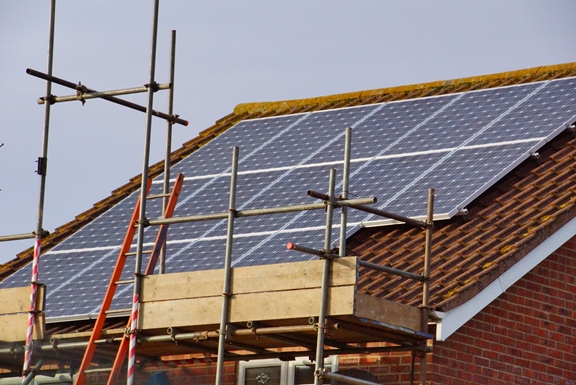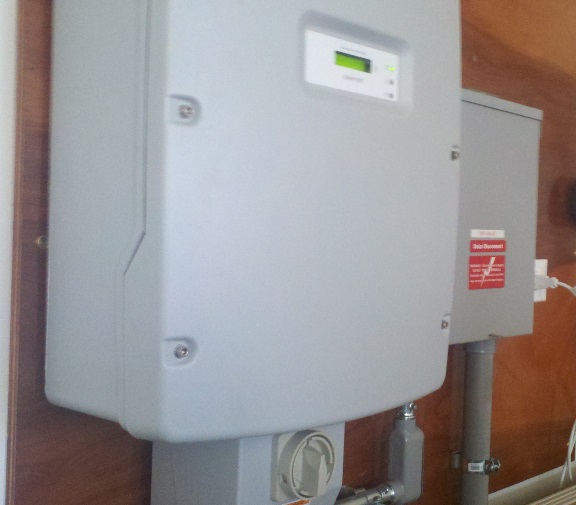This week we have a great guest post from Christine Maddox. Currently she is pursuing a Master’s degree from the University of Texas as well as blogging for www.4nannies.com. She primarily loves to write about anything related to parenting, kids, nanny care, but also has an interest in solar power. While we have covered many topics revolving around alternative energy & in particular solar, we never really delved into what a system typically entails. Well in this article Christine delves into some of the specifics & why it really isn’t as simple as a plug & play device…
Adding a Solar Array: It’s More Science than Just Plug-and-Play

Some may be under the misunderstanding that plugging in a few solar panels on their roof will make them energy efficient. While this may produce some power that can help reduce the costs of electricity within the home, there is more to an array than simply bolting down a panel and expecting it to work. There is a great deal of technological hardware that needs to be implemented and the panels need to be arranged correctly in order to develop the desired effect.
1. Panel Placement – For homes and businesses in the Northern hemisphere of Earth, optimum coverage of sunlight requires a South-facing wall or roof. This is because the South-side of the structure is the most exposed to sunlight as the planet revolves. In the Southern-most hemisphere, this exposure would be more North. The round shape of the planet puts the Sun in particular locations and panels that take advantage of maximum exposure will gain the most sunlight for solar arrays.
2. Bolted to the Roof – Merely bolting a panel to your roof may provide power for your home, but how safe is the attachment? Without properly bolting your panels to the framework of the roof, wind and other storms could help the panel cause irreparable damage to your home. Neglecting to use a sealant for these bolts could also cause future damage as water can seep in where the bolt penetrates the roof and begin rotting the woodwork.
3. Angle of the Panel – Areas that are plagued with high wind need to angle panels as to not create a windbreak. Excessive wind speeds could easily tear the panel completely off of the roof or tear them up from the ground if not properly secured. For this reason, most panels are placed flat on rooftops. If your array does need to be angled in order to maximize the exposure to the sun, reinforce the structure in order to prevent being torn out of place.
 4. Inverters – Although there are kits and devices that can effectively use the DC current from a solar array, inverters are used to switch the DC to AC current. This switch allows a person to utilize the same AC specific appliances that are plugged into the wall socket. If the inverter is “grid-tied,” the power is shut off from the grid in the event of a blackout. This prevents utility works from being harmed by power that is supplied from your solar array.
4. Inverters – Although there are kits and devices that can effectively use the DC current from a solar array, inverters are used to switch the DC to AC current. This switch allows a person to utilize the same AC specific appliances that are plugged into the wall socket. If the inverter is “grid-tied,” the power is shut off from the grid in the event of a blackout. This prevents utility works from being harmed by power that is supplied from your solar array.
5. Batteries – The deep-cycle batteries that are used in solar units are much more than tying a few car batteries together. These batteries hold sufficient power in order to continue the operation of your household items without “brown-outs” due to lack of sufficient sunlight. Different sizes and capacities exist for these and combining 100 D-sized batteries is not going to work the same way. Deep-cycle batteries are optional and are not required in order to use a solar array. However, they do prevent disruption in service.
Although setting up a solar array of your own may look easy, there are many things you need to consider. The above list is just a few things you need to keep in mind when erecting your own solar array. Neglecting safety and the science behind a solar array could cause damage to your home and injury to yourself. If you are not 100-percent sure of what you’re doing, it’s always in your best interest to call a professional.
| I would like once again to thank Christine for this great article & the time she took to write it. Got to love the photo she also included which really brings to life the challenges of bolting one properly to a roof. Thank you ChristineBesides the articles we have written on this topic, another great resource I like to direct people to is Northern Arizona Wind & Sun as not only to do they have a ton of good articles, but they also are well known for providing help & systems to many individuals that live completely off the grid. |

This post is really lucrative for every information seeker and person who is willing to put their efforts for better updates on Solar Energy
This post is really lucrative for every information seeker and person who is willing to put their efforts for better updates on Solar Energy